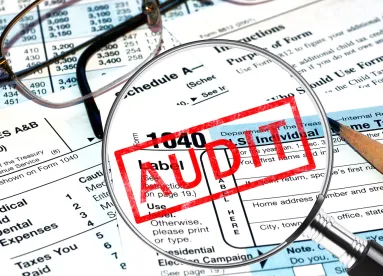In October 2017, the Securities and Exchange Commission (SEC) approved a proposal of the Public Company Accounting Oversight Board (PCAOB) to make significant changes to the form of audit opinion issued with respect to public company clients[1]. While the changes to the audit opinion format have been implemented, the most significant part of the proposal requires that auditors disclose within their audit opinions any “critical audit matters.” A critical audit matter, or CAM, is defined as any matter arising from the audit that:
-
Was communicated or required to be communicated to the company’s audit committee;
-
Relates to accounts or disclosures that are material to the company’s financial statements; and
-
Involved especially challenging, subjective, or complex auditor judgment.
In addition to identifying any CAMs, the auditor must also explain how the auditor addressed the matter by including a brief description of the audit procedures used and the outcome of these procedures.
The CAM disclosure requirement is being phased in with the first group — large accelerated filers with a fiscal year ending after June 15, 2019, having just completed their first Form 10-K filings with the new audit opinion disclosure. For public companies other than large accelerated filers (and emerging growth companies, which are exempt), this new disclosure will not be applicable until audits of financial statements for fiscal years ending after December 15, 2020. It is not too soon, however, to begin a discussion with your external auditors about CAMs, as adequate preparation and documentation of critical audit matters ahead of implementation may serve to reduce auditors’ time and expense and management’s angst when it applies to you. In addition, together with legal counsel, you will need to determine whether any items to be identified as a CAM require additional disclosure elsewhere in the company’s public filings, such as in any risk factor disclosure.
What have we seen so far? To date, approximately 50 companies have made public filings with audit opinions that describe critical audit matters. While the PCAOB has stated that it is possible for an auditor to determine that there were no CAMs, every filing so far has identified at least one CAM. Most opinions identified one or two CAMs, although there was one filing that identified four different CAMs.
What types of issues have been identified as CAMs? No real surprises here. While only two of the filing companies were banking related, both opinions identified the allowance for loan losses as a CAM. Both audit opinions’ CAM disclosures focused on the factors management uses to determine the adequacy of the allowance. Banks should anticipate added procedures and documentation requirements in connection with their allowance calculations. Talk to your audit firms now about what historical data they will want to see when the CAM disclosure requirement becomes applicable to you. One of the two audit opinions also identified goodwill accounting as a CAM. This was true for non-financial companies in the sample that had significant goodwill on their books as well. If you have goodwill or significant intangible assets, expect to have to clearly demonstrate your impairment analysis.
For many non-financial companies in this first filing group, a critical audit matter cited involved revenue recognition, which is not surprising as many were technology companies. Another frequent CAM was accounting related to acquisitions. While this was not cited on either of the two banks in the initial filing group, institutions that have made significant acquisitions should expect this to be a potential CAM. Accounting for both deferred taxes and fair value techniques used for non-market-traded investments were also noted in several of the audit opinions and may be a CAM for some financial institutions too. The implementation of current expected credit loss, or CECL, is very likely to be noted as a CAM as well.
If your company is in the group for which CAM disclosure is not required until fiscal years beginning after December 15, 2020, it may seem that this is not a “front burner” issue for you, but you may wish to reconsider. As mentioned at the outset, auditors must also disclose what the auditor did in order to audit any identified CAM. In almost all of the disclosures, the audit firms cited “additional procedures.” Having an understanding of what these procedures may involve and cost ahead of the audit is also a critical matter.
1 Joan Guilfoyle, “SEC Approves PCAOB’s Proposal to Significantly Change the Form of Audit Opinion,” Jones Walker Banking and Financial Services Newsletter (November 2, 2017)



 />i
/>i
